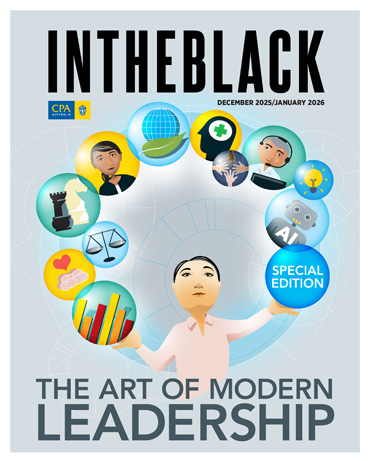Loading component...
At a glance
Once upon a time, the popular conception of workplace safety centred solely on physical hazards such as slips, trips and falls.
However, following amendments to Australian federal workplace safety legislation introduced in 2022, the definition of workplace safety has broadened. It now encompasses “psychosocial hazards”, which refer to anything in the workplace that could cause psychological harm.
“A psychosocial hazard is essentially any aspect of work design, systems and the environment — or the interaction of those things — that can cause harm,” says Dr Kathryn Page, an organisational psychologist and adjunct professor at Swinburne University.
These hazards include high workloads, inadequate recognition and low control, and can contribute to high levels of stress and job strain among employees, potentially impacting their health.
“Prolonged exposure to job strain can increase the risk of mental health conditions like depression, not just exacerbate them,” Page says.
Under work health and safety legislation, employers must minimise psychosocial risks in the workplace.
“If [leaders] are aware there are stressors in the organisation — and they need to take reasonable steps to assess whether they are present — and they don’t then do something to either eliminate the stressor at its source or put in place mechanisms to mitigate or control the hazard, they can be legally at risk,” Page says.
“You can have WorkSafe inspectors enter the workplace to issue notices around the psychosocial work environment in the same way they do with physical hazards. It’s an incredible change and improvement.”
Disconnect from work: Ways you can avoid burnout
Identify psychosocial hazards
John Tregambe, director of Melbourne firm Your Safety Partners, says some employers may find the new legislative requirements pertaining to psychosocial hazards overwhelming.
However, resources such as Safe Work Australia’s Managing psychosocial hazards at work: Code of Practice and ISO 45003, a global standard providing guidance on managing psychological health at work, can help employers understand their obligations.
Data collection is another valuable tool.
“Anonymous surveys, if they’re done properly, can indicate where the hazards are,” Tregambe says.
Sample questions might include “How well does your boss allocate responsibilities?” or “Do you feel overwhelmed?”
Other valuable quantitative data may come in the form of check-ins, exit interviews and incident reports, which can be used to identify areas of concern. Organisations can also conduct interviews or listening sessions to gather qualitative data to learn more about these hotspots.
"If [leaders] are aware there are stressors in the organisation — and they need to take reasonable steps to assess whether they are present — and they don’t then do something to either eliminate the stressor at its source or put in place mechanisms to mitigate or control the hazard, they can be legally at risk."
Page says any questioning should focus on the design of work rather than how people are feeling, which can imply the problem lies with an individual’s lack of resilience or suitability for the role, rather than organisational issues.
“A critical component of psychosocial safety is not just talking about individual coping mechanisms, although that’s important, but also ensuring that we always go back to asking questions about the way work is designed, as well as workload, workflows and relationships.”
It helps to involve staff in the process.
“It can’t just be managers or HR getting together to think about what the hazards might be — you have to consult with the people who are doing the job,” Page says.
“Quite often, that involves co-designing solutions with people as well, because we know there is often a huge divide in what management thinks is the experience and what the experience is on the frontline.”
In this sensitive environment, trust is critical. “If you don’t have trust in the system and people don’t feel safe to tell you what’s not working, you will never be able to fix it,” she says. “People won’t necessarily feel comfortable to report hazards as they’re being experienced without fear of repercussions”.
She notes that it is not just about responding to risk but investing in prevention and proactively looking for opportunities for improvement.
What organisations can do
Addressing psychosocial hazards often requires deep-seated cultural or structural changes.
“Job design is really important,” Page says.
Employers can choose from a range of frameworks to improve the psychological safety of the workplace. Page often uses the Prevent, Promote and Support model, which she describes as “an integrated approach to workplace mental health” that builds on legislative requirements.
“Preventing psychosocial hazards sits under the first pillar, which is around preventing harm — things like setting realistic workloads, making it safe to say no, and improving the systems and the structure of work,” she explains.
“The second pillar is around promoting wellbeing: giving people a voice to talk about what makes work meaningful, having opportunities to craft their roles and investing in relationships, giving people that sense of connection. It promotes the positive aspects of work, which almost always come down to autonomy, meaning and connection.
“The third pillar is around responding to mental health problems — when you start to see signs of potential mental health problems, making it a safe environment for people to say, ‘I’m not okay’, and then providing pathways to appropriate support.”
Another framework Page recommends is the SMART Work Design model, developed by Curtin University’s professor Sharon Parker, which encompasses themes such as mastery, agency and tolerable demands.
“It’s a way of engaging with workers and encouraging them to think about changes to job design, workflows, systems or structures to make work more tolerable in terms of demands, more meaningful and more stimulating,” Page says. “They’re often small tweaks that can be made within the control of the work team.”
Adopting these frameworks can feel like a significant investment, but Page believes organisations benefit in the long run.
“Creating environments where people thrive and do their best work not only improves health outcomes, but it also drives performance,” she says. “It then becomes something organisations do because it’s good for business — not just the right thing to do.”
Examples of psychosocial hazards

Safe Work Australia defines psychosocial hazards as “anything that could cause psychological harm”. Here are some examples:
- job demands
- low job control
- poor support
- lack of role clarity
- poor organisational change management
- inadequate reward and recognition
- poor organisational justice
- traumatic events or material
- remote or isolated work
- poor physical environment
- violence and aggression
- bullying
- harassment, including sexual and gender-based harassment, and
- conflict or poor workplace relationships and interactions.

